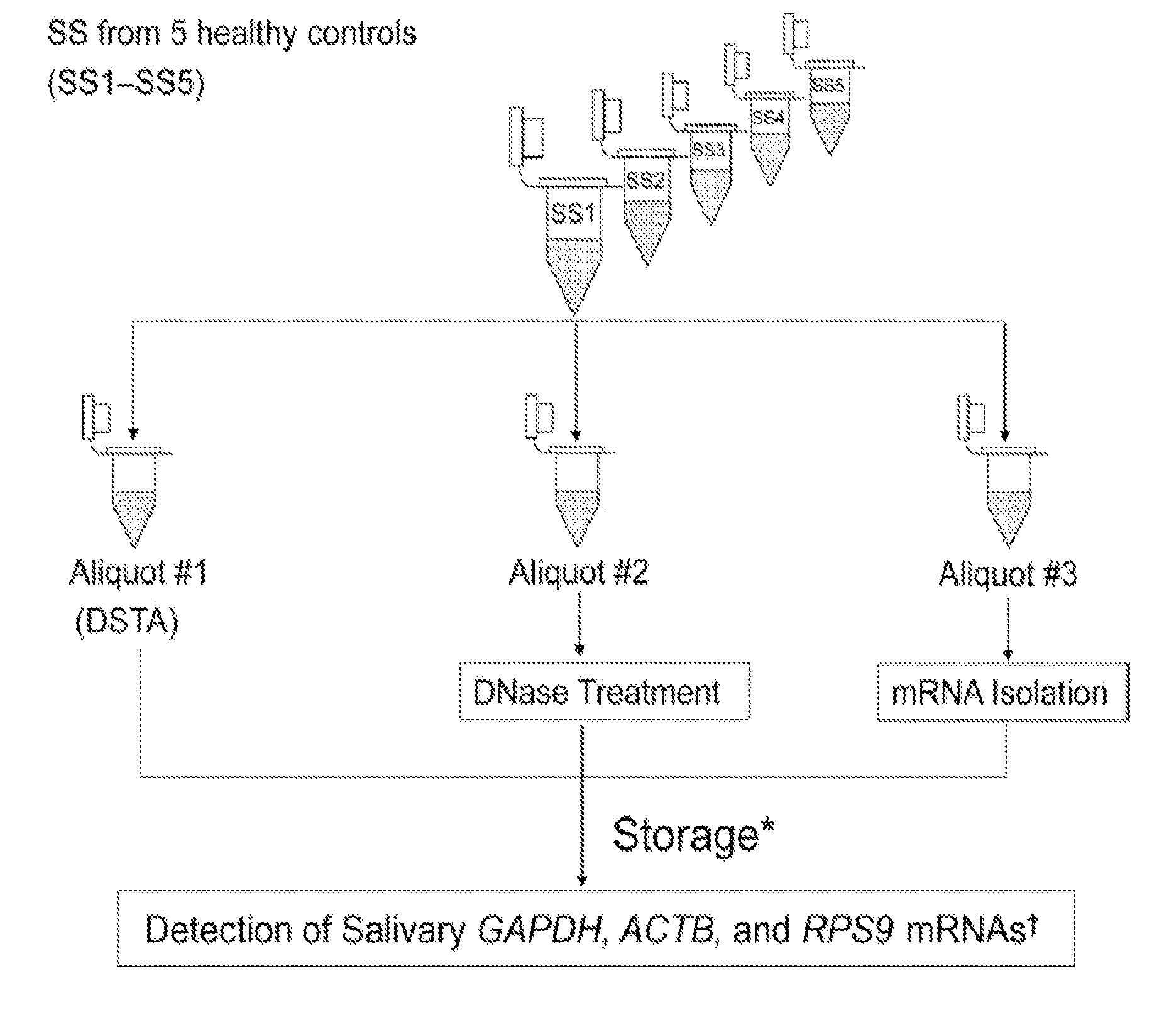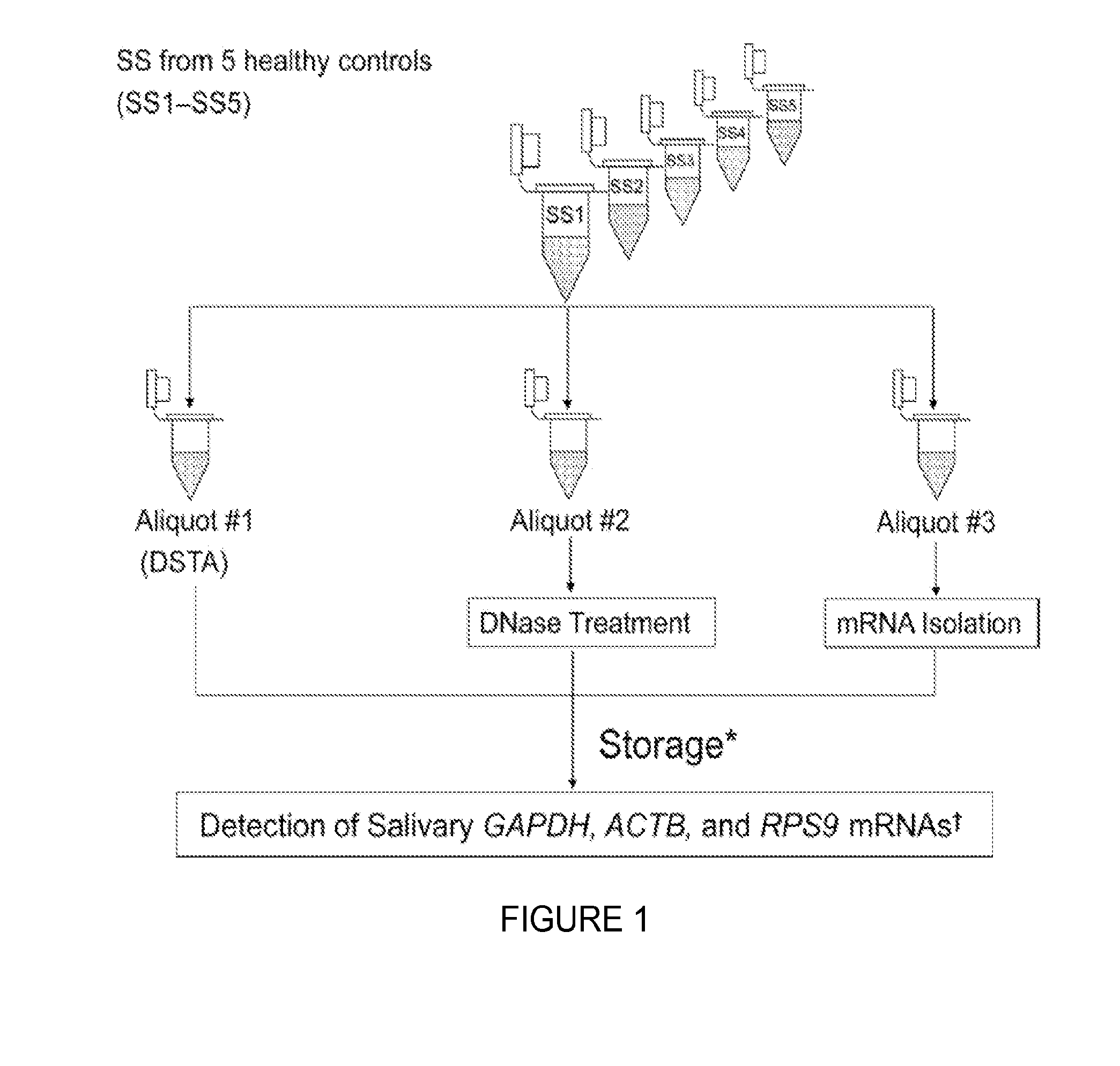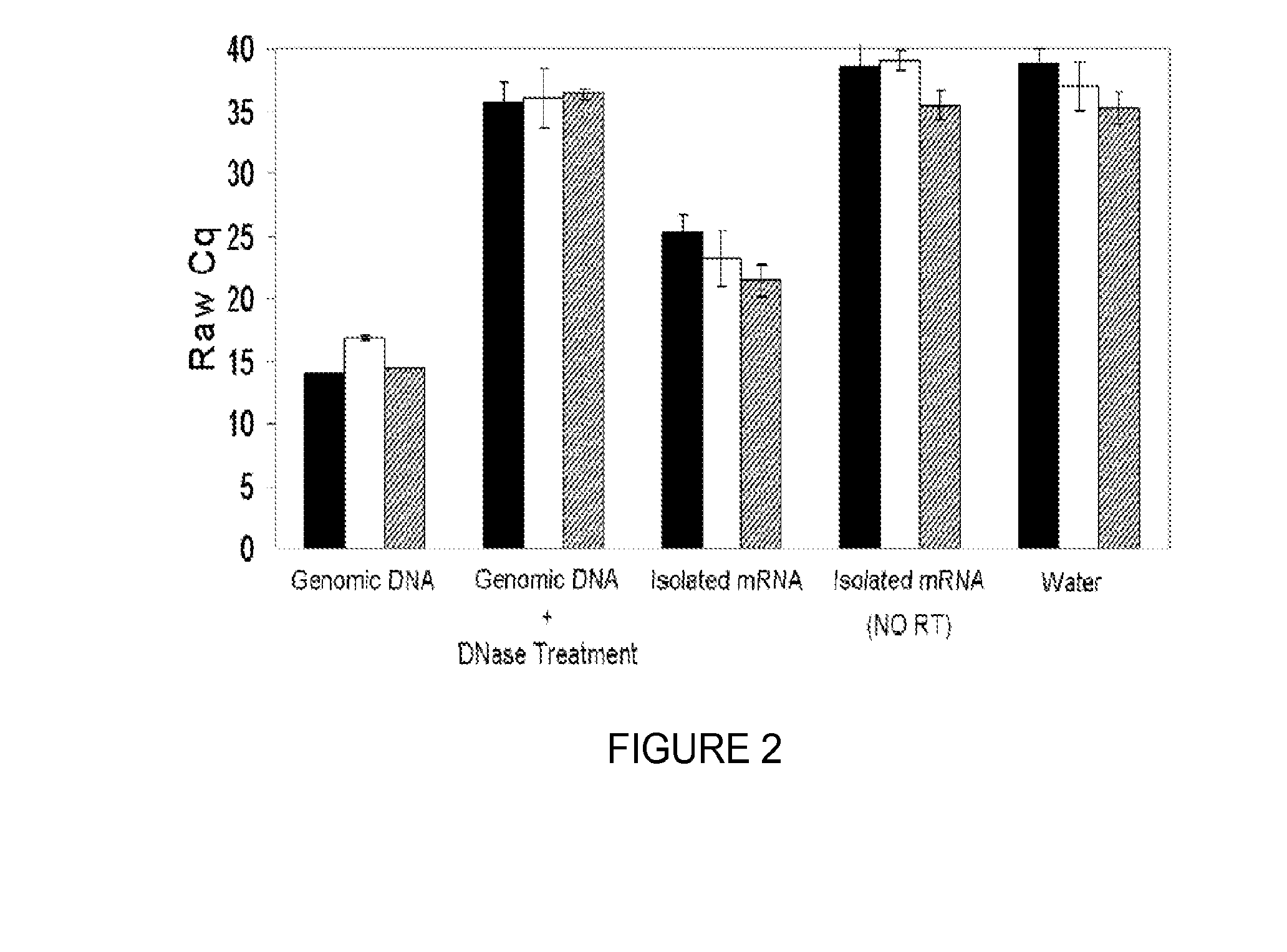Saliva collection, processing, stabilization, and storage method
- Summary
- Abstract
- Description
- Claims
- Application Information
AI Technical Summary
Benefits of technology
Problems solved by technology
Method used
Image
Examples
example 1
Direct Saliva Transcriptome Analysis (DSTA)
[0087]Standard operating procedures for salivary transcriptomic analysis require low temperatures and lengthy mRNA isolation processes. This example describes a streamlined, ambient-temperature processing, stabilization, and storage protocol for clinical analysis of salivary RNA.
Materials and Methods
DSTA Protocol
[0088]Direct Saliva transcriptome analysis (DSTA) procedures, including processing, stabilization, and storage of saliva samples, were performed at ambient temperatures and used saliva supernatant (SS) instead of isolated mRNA for saliva transcriptomic detection. SS was prepared by centrifuging collected unstimulated whole saliva at 2600 g for 15 min at 4° C., followed by aspiration from the pellet. The harvested cell-free SS was then sealed and stored in a cool, dry environment at ambient temperature without stabilizing reagent until use. The salivary mRNA was directly detected by a reverse transcription quantitative real-time PCR ...
example 2
Proteome Stabilization in Saliva
Materials and Methods
Sample Collection and Processing
[0106]This examples shows that the salivary proteome is stable for approximately two weeks at room temperature (RT) without degradation by adding ethanol to the samples.
[0107]Saliva samples were collected from 10 healthy subjects. None of the subjects had any history of malignancy, immunodeficiencies, autoimmune disorders, hepatitis, and / or HIV infection, and had a mean age of 35 years. Subjects were asked to refrain from eating, drinking or using oral hygiene products for at least 1 h prior to collection. After rinsing their mouths with water, 5 mL saliva was collected from each subject into a 50 mL Falcon tube. These saliva samples were filtered with a 0.45 μm PVDF membrane (Millipore, Billerica, Mass., USA) to remove cells and any debris. The flow through was collected. During the sample preparation, saliva samples were always kept on ice. FIG. 7 is the schematic diagram for the sample preparatio...
example 3
Saliva Collection, Processing, Stabilization, and Storage (SCPSS)
[0127]Subjects were asked to refrain from eating, drinking, smoking, and oral hygiene activities for at least 2 hours prior to collection. Whole unstimulated saliva was then collected using the Oasis saliva collector “SuperSAL” (FIG. 13) for about 10-15 min. The collected saliva was then processed for respective molecular constituent (DNA, Protein and RNA) stabilization and storage.
[0128]The collection tubes were pre-loaded with specific stabilizers for protein, RNA and DNA. All samples can be transported and stored at room temperature.
Isolation of Mammalian and Microbial DNA
[0129]An aliquot of whole saliva (1-2 ml) was dispensed into a microfuge tube. An equal volume of 2× lysis and DNA Stabilization Buffer (Oasis Diagnostics) were added and maintained at room temperature.
Isolation of RNA
[0130]For salivary RNA and proteins, the collected saliva is pushed through a barrel where there is a filtration unit (Millipore MG...
PUM
| Property | Measurement | Unit |
|---|---|---|
| Temperature | aaaaa | aaaaa |
| Length | aaaaa | aaaaa |
| Length | aaaaa | aaaaa |
Abstract
Description
Claims
Application Information
 Login to View More
Login to View More - R&D
- Intellectual Property
- Life Sciences
- Materials
- Tech Scout
- Unparalleled Data Quality
- Higher Quality Content
- 60% Fewer Hallucinations
Browse by: Latest US Patents, China's latest patents, Technical Efficacy Thesaurus, Application Domain, Technology Topic, Popular Technical Reports.
© 2025 PatSnap. All rights reserved.Legal|Privacy policy|Modern Slavery Act Transparency Statement|Sitemap|About US| Contact US: help@patsnap.com



